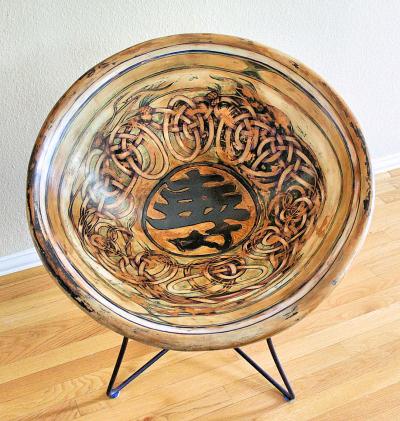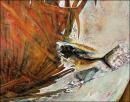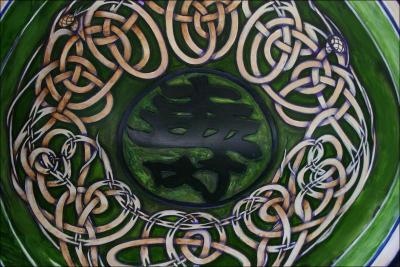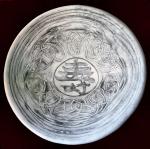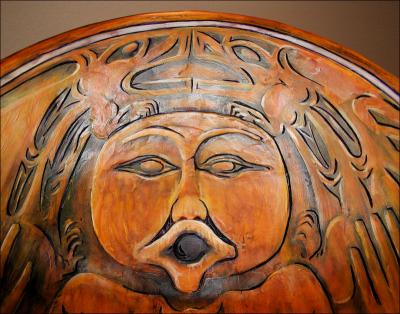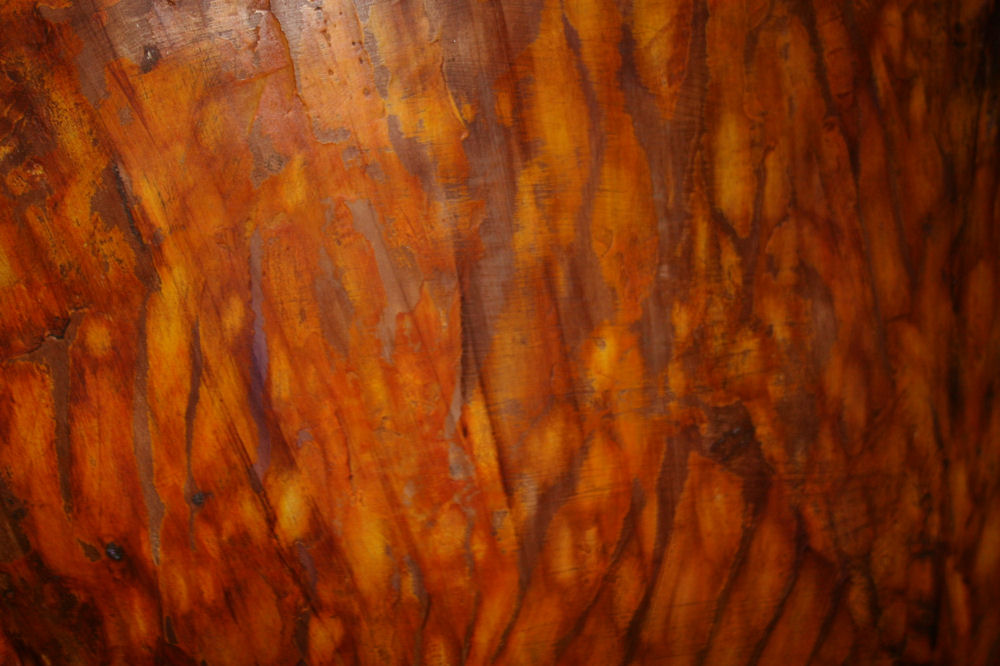history/multicultural theme
« Previous Entries Next Entries »The Tree of Life Chair
Monday, November 30th, 2009
The Tree of Life, 29H x 29W x 29D inches mixed media; refurbished vintage plastic lawn chair, woven canvas strips and white glue, thin layers of drywall compound: cured, sanded, carved, acrylics paint, varnish. Durable, completely functional.
There was an interesting buildup of colors after a lot of changing colors and repainting the design many times, so the impressions of this chair are created like the other chairs in this series; ancient artifact replicas. The other chairs are listed here.
The Evolution of Communication
Tuesday, November 3rd, 2009
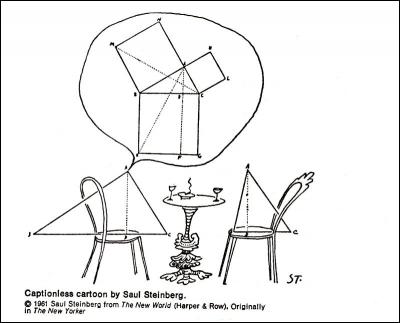 The title of a work of art can help sell it, and captions can complete our understanding of a picture, but the most successful works of Art manage well without an explanation. Our visual senses – sight and insight – have a language of their own. Upon viewing anything, multitudes of information are presented and understood simultaneously, almost instantly. With or without color, images are powerful, possibly even more than words, because with the development of human communication, pictures came first. It’s now widely accepted that symbols marked the origins of written language across the world.
The title of a work of art can help sell it, and captions can complete our understanding of a picture, but the most successful works of Art manage well without an explanation. Our visual senses – sight and insight – have a language of their own. Upon viewing anything, multitudes of information are presented and understood simultaneously, almost instantly. With or without color, images are powerful, possibly even more than words, because with the development of human communication, pictures came first. It’s now widely accepted that symbols marked the origins of written language across the world.
It takes much less time to perceive than it does to write about it. For a hands-on illustration of this, draw a simple Smiley Face, and note the time that it takes to draw it. Afterward write down everything that comes to mind about that icon; what it means, other general impressions and associations. Although this is a familiar icon with clear connotations, possibly something we see every day now, plus almost all of us have drawn it at some point, within seconds of describing it you will realize how much longer it takes to interpret as quickly into words. Harvey Ball, the original artist of the Smiley Face icon must be flabbergasted that succeeding generations would come to coin the term, “emoticons”, based on an indefinite number of facial expressions that spawned from the first, including animated ones that wink and cry, and more.
Essentially, full comprehension in any language relies on those aspects of our mind’s eye: memories and imagination in order to be fully effective. Pictures appeal to our abstract, multidimensional experiences and through the emotions, allowing for individual’s interpretations. There are higher expectations for words. We assume that they alone are qualified when we’re talking on the phone and participating in online computer groups, for instance, but it actually takes extra effort for our intent to be clear when we don’t have access to the visual side of our statements. Even if we speak the same language, the words we choose and their meaning can be misinterpreted and misunderstood.
Relying on the visual aspects of learning, subjects in school are traditionally taught using chalkboards and eraser-boards, stimulating audio and visual senses. Likewise, motivational speakers often use diagrams to help get the point across. The use of imagery is rampant everywhere now. It’s extremely effective in all forms of advertising, and despite all attempts to hold on to all copyrights, if the art is relatable it spreads like wildfire on the internet. Artists of every kind are more vulnerable than ever to fraud.
Harvey Ball’s Smiley Face is a perfect example of how artists are not really in control of what they create. Generally though, any exposure is good exposure, because most people who borrow other people’s graphics or ideas still want to know who the source is. As artists it’s beneficial and constructive for us to continue moving on to the next best project and keep progressing with a lifetime of work. We have to learn to let go of the strong bond we have with the art we create. It’s personal, to be sure, but a good motto is, “There’s more where that came from”.
Along with the resources available to us now, in our progressive age of high technology and wireless everything, it’s still the Human factor that needs refining. We only need to trust intuition as much as logic, with as much emphasis on communicating our emotions as openly and explicitly as we do words and speech. Fortunately there are infinite forms of expression, and inevitably it’s a good thing that creativity is available to everyone, not just artists. Creativity thrives on challenges to communicate effectively; it always has and it always will.
More about Artists and history in the article, The Influence of History.
~
Credits: Above cartoon by Saul Steinberg (1914 – 1999) was a Romanian-born American cartoonist, best known for his work in the New Yorker magazine. Harvey Ball, Wikipedia, Smiley Face
Fossils Chair, Homage to The Earth – finished
Wednesday, April 22nd, 2009
January 12th: While sanding the wood for the Sumac Bushes Chair during coffee breaks, I have started the Fossil Chair, paying homage to the fact that without trees, all life on Earth would not be so prolific, and might not exist at all. Fish and Trilobites are carved into the plaster on the front surface of the chair as well. in this series.
January 13th: Lower detail of Fossil Chair, carved plaster, acrylic paint inlay, sanded. In progress. Trilobites will have painted detail.
Jan. 14th and Jan. 24th updates, below: front details, work in progress on back/underside of the chair. After this stage, all details will continue to be refined with more carving and layers of acrylics. Haven’t done many details on the trilobites yet. The colors in the palm leaf still are too vibrant for a fossil, but are a perfect underlying color because it shows through when layers of blues and black are wiped away with a cloth.
 Fossils Chair, Homage to The Earth, started in January and finished today, except for refining the bark fossil patterns on the back/underside. 29 x 29 x 29 inches refurbished vintage chair, canvas strips, plaster, carved, acrylics, varnish, waxed.
Fossils Chair, Homage to The Earth, started in January and finished today, except for refining the bark fossil patterns on the back/underside. 29 x 29 x 29 inches refurbished vintage chair, canvas strips, plaster, carved, acrylics, varnish, waxed.
The back of this chair has authentic 225 – 345-million-year-old fossilized clam shells embedded around the circumference. Next, the Encyclopedia Britannica listing. The fossils were found in a mixture of playground pebbles in Dallas, TX.
The Cycad leaf fossil replica original was discovered in a Wyoming, USA river basin. Portrayed on the front of the chair is the fossil of a Cycad, the first of palm-like trees that grew about 50 million years ago in a Wyoming riverbed. The first trees on Earth were actually nothing more than woody stems standing in and absorbing nutrients from water. Patterns of fossilized Paleozoic Lepidodendron bark- leaf scars are painted on the underside of the chair. Lepidodendron were a primitive species of the very first trees on earth, reaching heights of 130 feet (40 m) tall around 400 million years ago. Can we even relate to those numbers? That’s what I love about fossils – holding one and contemplating Earth’s timeline is mind-blowing.
| Progress details: | |||||
 |
 |
 |
|||
 |
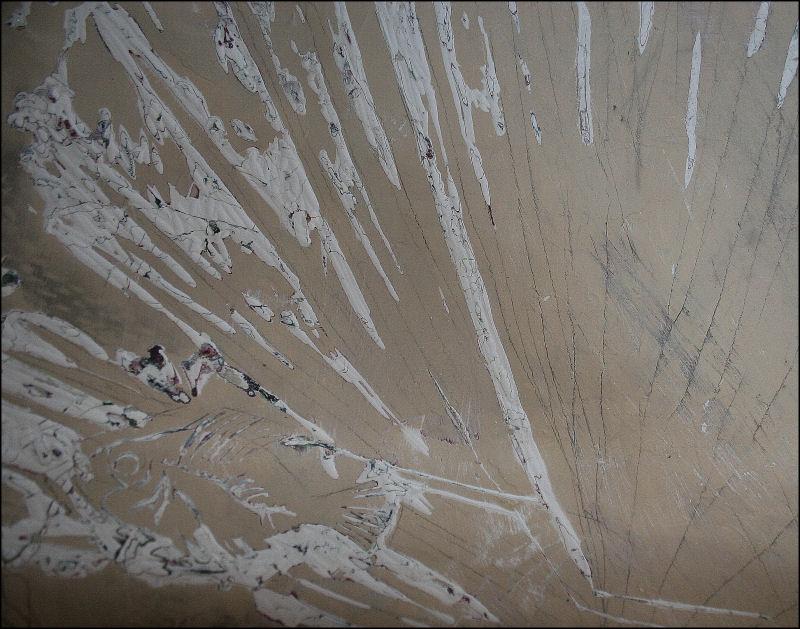 |
 |
|||
| Finished details: | |||||
 |
 |
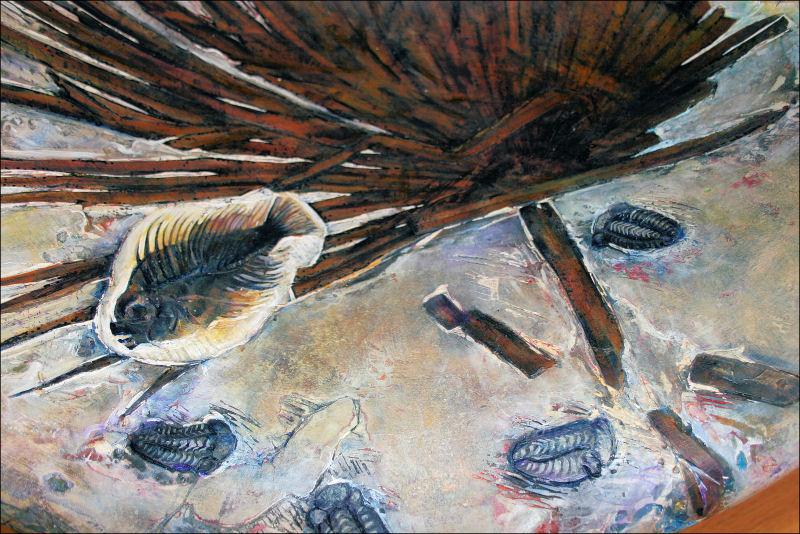 |
|||
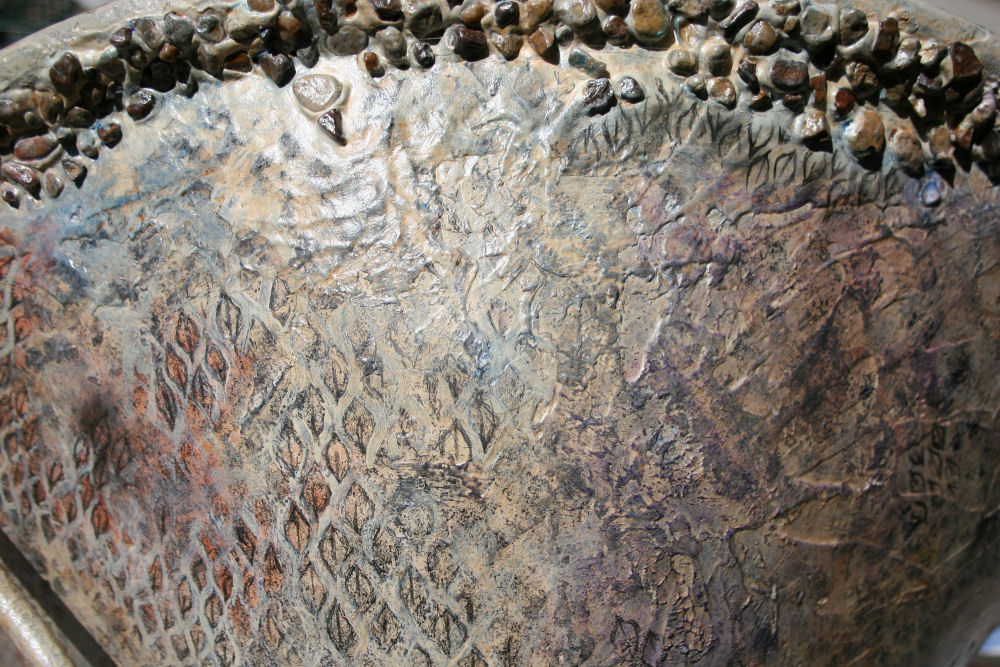 |
 |
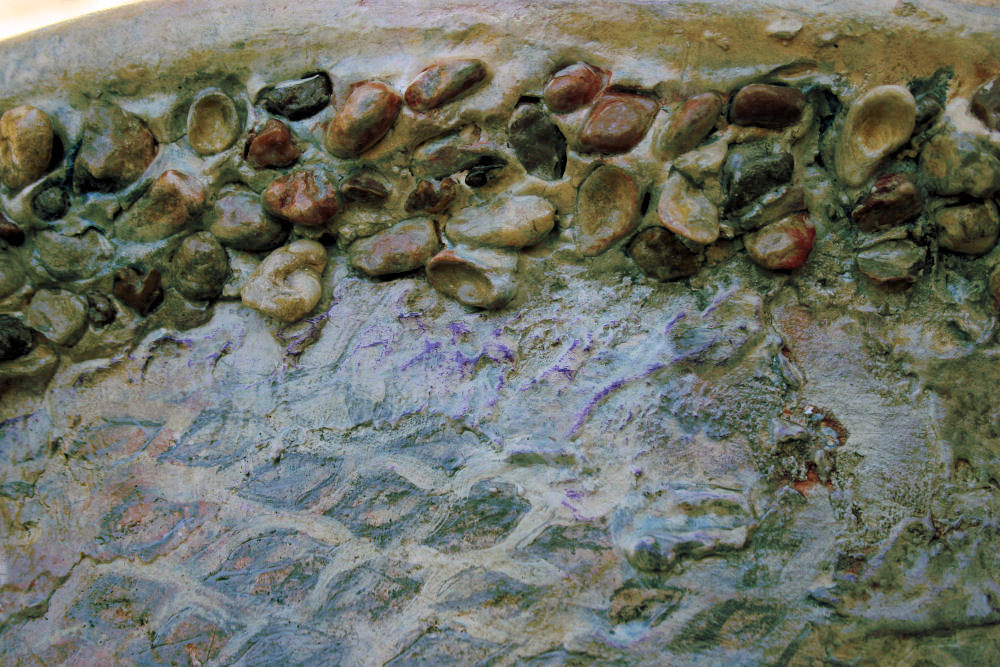 |
The Tree Of Life chair
Saturday, April 18th, 2009
April 18th, above: still in an extremely rough state, and still deciding about which colors to use and how. There must be much more plaster on the Salish chair, because this one is not carving as well. Only the Shou symbol will stand out carved..all else will be implied. Blue, purple and green are the new black! Actually that’s the old impressionist trick of course, but I also rarely use black if those 3 will do – they are much livelier and more interesting than flat black. The Yin-Yang/Aboriginal legend snakes have been eliminated because working them in color-wise was going to be a problem. The Celtic design was getting lost in too much else around it. I am anxious to find another chair because I really want to do one with Australian-inspired motifs and colors.
Post-dated note: Unfortunately, there is not enough room to show this for the premier of the Trees show in Raleigh. I’m mostly relieved that there is extra time in my schedule now for preparations, but this chair now needs to be set aside in light of the other priorities.
April 14th: 29H x 29W x 29D inches vintage chair, canvas strips, layers of sanded plaster.
The design incorporates a few esoteric concepts common to many world cultures: Overall is the idea of the Tree of Life and the theory of As above, So below, represented by branches and roots. Symbolic of longevity along with the pine tree, and central to the design is the Japanese character, Shou. The branches and roots of the pine tree are interwoven in the classic Celtic style, inspired by designs in the Book of Kells, gospel manuscripts that were illustrated by Irish monks around the year 800 A.D., common era. Two snakes drawn in the Yin-Yang placement represent Australian Aboriginal legends; the Rainbow Snake is their most important sacred symbol, believed to be the creator of all things. Christian biblical literature it is the snake who gives the apple from the Tree of Knowledge to Eve. There are more, but the rest you may like to discover yourself!
There is still plenty of intricate work to do with the roots – this’ll be fun! Drawing freehand is much better than casting the original drawing on with light and tracing it because each time it’s drawn, first with graphite, then marker, then many layers of paint, I become more familiar with the lines and the final outline will be steady and clean.
 April 7, 2009: While studying some of the previous paintings that are still in progress, I sketched out my version of The Tree of Life, a preliminary drawing for the fourth refurbished vintage chair, and have also been layering and sanding the plaster in preparation for it. Colors planned are black, off-white and greens. The other chairs in this series are shown here.
April 7, 2009: While studying some of the previous paintings that are still in progress, I sketched out my version of The Tree of Life, a preliminary drawing for the fourth refurbished vintage chair, and have also been layering and sanding the plaster in preparation for it. Colors planned are black, off-white and greens. The other chairs in this series are shown here.
Salish Spindle Whorl Chair finished
Saturday, December 20th, 2008
 About the chairs: Art on Art on Art – A Tribute to Creativity
About the chairs: Art on Art on Art – A Tribute to Creativity
Each functional, comfortable 29 x 29 x 29 inch replica of ancient Art or artifact re-utilizes vintage plastic lawn chairs that were considered Art during the 1960’s. The original structures, damaged or unusable were refurbished by a process of weaving canvas strips along with white glue paper-mache style over the entire plastic top and bottom, and multiple layers of drywall compound sanded in between coats. Designs are drawn with graphite, painted with acrylics and a few coats of varnish for durability, then waxed to finish and enrich the colors. Two more Solaire chairs and other styles of chairs are in various stages of completion yet to be embellished with historic Art themes from other cultures. Other styles of chairs are also in progress.
 The skeletal structure of these chairs, called Solaire chairs, were manufactured during the 1960s and 1980s. Art in their own day, these particular ones were unusable; in poor condition they were bound for the landfill sight. Originals designed by Fabiano and Panzini, a French Canadian team, the Solaire chairs are now collectors items, some selling for $500.
The skeletal structure of these chairs, called Solaire chairs, were manufactured during the 1960s and 1980s. Art in their own day, these particular ones were unusable; in poor condition they were bound for the landfill sight. Originals designed by Fabiano and Panzini, a French Canadian team, the Solaire chairs are now collectors items, some selling for $500.
The first chair to be up-cycled was a large replica of a Mayan bowl. The Mayan culture (Mexico, Guatemala, Belize and parts of Honduras, 900 B.C. – 900 A.D. Common Era) developed a very complex written language using pictographs. Many of these were facial expressions and hand gestures. The bowl displays the birth of the Maize God, and along the top edge the name of the bowl’s owner is written, as well as possibly what it was used for.
Salish Carved Wood Whorl
 Whorls are weights that stabilize used for spinning yarn. The yarn in this case would have been wound just above the whorl. Spinning yarn and weaving fabric are some of humankind’s oldest technology. Left: example of a spindle with whorl, Eve Spinning Illuminated Manuscript c. 1170 A.D.
Whorls are weights that stabilize used for spinning yarn. The yarn in this case would have been wound just above the whorl. Spinning yarn and weaving fabric are some of humankind’s oldest technology. Left: example of a spindle with whorl, Eve Spinning Illuminated Manuscript c. 1170 A.D.
Historically everywhere wood has been used for tools, utensils and everyday items, they were often carved. The original spindle whorl that was the inspiration for this chair was used by a Salish Northwest Pacific coast community living south and east of Vancouver Island. Here a central human figure holds two otters. A Kwakiutl (also living in Vancouver Island territory) prayer to a Cedar tree prayer was very much a part of the inspiration for this chair. It reads: “Look at me friend! I come to ask you for your dress, since there is nothing you cannot be used for. I come to beg you for this, Long-life maker”.
December 18th: Finishing details, further definition with acrylics and two coats of varnish, waxed. Decided against the decoupage of the Kwakiutl prayer to a Cedar tree because it does not look as good as hoped. December 16th: Carved the plaster in areas then inlaying purple for contrast rather than black. Purple glazes also make yellows much richer.
The back and under-side of the chair is painted to look carved. The undercoat of yellows shines through succeeding layers, and carved wood textures are created with varnish leaving raised brushstrokes, and am trying whatever else I can think of to make it look like wood! More modeling with plaster and light sanding, then redrawing with graphite, and the design is continually adjusted.
New chair started: Salish Wooden Whorl
Sunday, December 14th, 2008
This functional replica of a Salish Carved Wood Whorl re-utilizes a 1960’s plastic lawn chair, 29H x 29W x 29D inches that was considered Art in its own day. The refurbished chair has woven canvas strips and white glue applied paper-mache style over the entire plastic top and bottom. Multiple layers of wall plaster are sanded in between coats. The design is sketched with graphite then painted with acrylics, and drawing is continually adjusted as layering of materials continues.This is the second chair of four in the historic Art-themed series. The other two chairs are in the earlier stages of progress.
Going for the magic every hour
Friday, August 15th, 2008
Magic Hour finished (Gitxsan Totem Pole, Thunderbird Park, Victoria, BC Canada), 60H x 40W x 3D inches acrylics on canvas, sturdy home-built stretcher frame, wrapped sides painted, narrow trim frame. Here is an earlier post with information about this totem pole.
 Great moments in painting are addictive, when so completely immersed in the work that time becomes non-existent… The Zone! I’ve had a good week with this one, partly because of getting past the habit of trying to control the outcome. Things happen in every painting that are not planned, and the endless choices are part of the fun.
Great moments in painting are addictive, when so completely immersed in the work that time becomes non-existent… The Zone! I’ve had a good week with this one, partly because of getting past the habit of trying to control the outcome. Things happen in every painting that are not planned, and the endless choices are part of the fun.
Painting is considered to be a two-dimensional undertaking, but it’s so much more. While lost in the work process, all the dimensions of the subject are explored, including the deeper dimensions of ourselves. While painting we discover our convictions and the means to ask how far we are willing to go to stand up for them.
Work every day is about continually reevaluating decisions, taking responsibility for choices made, being honest about mistakes, shortcomings and limitations of media and self, and digging deep to find compromise between technical and intuitive solutions. It’s about control of all those elements, combined with easing up on trying to control too much. All this and more translates onto a flat surface as we hope to give the illusion of depth…if that isn’t magic, I don’t know what is!
Post-dated Note: When choosing this totem pole that is erected in Thunderbird Park at the RBC Museum in Victoria, I didn’t realize that it’s the same one that Emily Carr painted in 1928. More magic! Here is a link to more information about this totem and the Gitxsan Poles moved from Gitanyow (formerly Kitwankool) B.C.
A word here about artists’ representation of First nations or any other cultural/historic works: subjects are painted with the greatest honor and respect, with purpose to study and draw interest to the importance of appreciating our multi-cultural world and the unique characteristics of each and every culture. This is what artists do. Our differences as cultures are connected across time and place, as there are many common traits and themes expressed through Art everywhere.
Robert Genn and readers of The Painters’ Keys have some very interesting comments all around the board about this topic.
Magic Hour, progress
Sunday, August 3rd, 2008
Magic Hour detail image, top half of 60H x 40W x 3D inches acrylics on canvas, sturdy home-built core stretcher frame, wrapped sides painted, work in progress. I decided not to lighten the background after all — am leaving the background as-is with loose brushwork in contrast to the totem pole which will be much clearer. To achieve the weathered look I’m using a dish-washing scratch pad to remove some of the paint.
Magic Hour – work in progress
Thursday, July 24th, 2008
Magic Hour, 60H x 40W x 3D inches acrylics on canvas, work in progress.
Art history is human history. What we call Art is the expression of individuals finding connection with our humanity; who are we? How do we respond to our surroundings and who are we in relation the things we depend on for survival? Standing in front of the Totems I realized that the answers we sought long, long ago are the same, and the things we love now are the same things people have always loved. As Artists and Art Viewers we’ll never venture far from subjects that speak to the heart.
The originals of all the totem poles erected in Thunderbird Park on the grounds of the Royal BC Museum in Victoria, Canada are now protected from the effects of weather inside the museum. The totem portrayed in this painting is a replica of the Gitxsan Pole that was moved in 1958 from Kitwankool, BC. This version of the pole is named Skim-sim and Will-a-daugh, belonging to Chief Wiha (Wee-kha, Ernest Smith), the chief of the Wolf Clan: only the top 3/4 of the totem is portrayed. Due to deterioration caused by weather, the originals of all the totems in Thunderbird Park are now erected inside the museum and are replaced with replicas carved by Mungo Martin, chief carver, Henry, Tony and Richard Hunt (this one 1960).
Symbols/crests: The bird at the crown is a giant woodpecker (wee-get-welku). Legend reads that a female ancestor kept a pet woodpecker, feeding it so much it grew to be a giant monster that ate everything made of wood until it was killed. It sits atop 5 human figures who stand on the head of the Mountain Eagle (Skim-sim), who kidnapped and mated with a woman then devoured their offspring. The eleven small figures are humans fishing through holes in the ice. Under them and not pictured in the painting is Will-a-daugh, also known as “Person With a Large Nose”, holding her child who was conceived from a wood grub.
Magic Hour started
Thursday, July 17th, 2008
Magic Hour, 60H x 40W x 3D inches acrylics on canvas, wrapped sides painted, work just started. This is the top half of the magnificent Gitxsan Totem pole, one of the Haida totems in Thunderbird Park near the Inner Harbor downtown Victoria, B.C.
The drawing is sketched with Alizarine Crimson and Red Oxide base. We were there a week ago just as the sun set, shining light on the right side of the totems and rising moon light lit the left side. I changed the tree silhouette to a typical B.C. horizon of tall Red Cedar, whereas the trees in that park are Maples.
« Previous Entries Next Entries »

